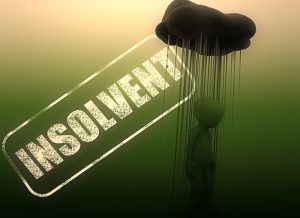What is a Statutory Demand?
Anyone who is owed money (the ‘creditor’) can serve a statutory demand. It is a formal demand for payment. A statutory demand can be sent in relation to debts owed by a company or an individual. In terms of individual debtors, a statutory demand is a compulsory step to take prior to the initiation of bankruptcy proceedings. However, it is not compulsory to serve a statutory demand on a corporate debtor before initiating winding-up proceedings.The Purpose of the Statutory Demand

Image: kalhh
When should a Statutory Demand be served?
The statutory demand is regarded as the first step during insolvency proceedings and can be used as evidence of indebtedness prior to the presentation of a petition. On this basis, a demand against an individual (Section 268 of the Insolvency Act 1986) must be:- In relation to a debt in excess of £5,000.
- Not in dispute.
- The debtor must be an individual domiciled in the UK, or meet the requirements of Section 265 of the Insolvency Act 1986.
- In relation to a debt in excess of £750.
- Not in dispute.
What happens if you have received a Statutory Demand that you dispute?
If you receive a Statutory Demand as an individual and you disagree with what is said, you should respond in writing explaining why you do not agree with the Statutory Demand. If the Creditor does not agree to withdraw the Statutory Demand, you will need to apply to the court to request to set aside the Statutory Demand within 18 days of service. If you receive a Statutory Demand against your limited company and disagree with the contents, you should respond formally as above but you will then need to apply for an injunction restraining presentation of a petition. If you do not respond to the Statutory Demand then you risk the creditor presenting a petition for winding up or bankruptcy.What to do if you receive no response after serving a Statutory Demand?
If you do not receive a response or the response received does not dispute the debt on substantive grounds, you can proceed to present a petition.Griffin Law is a dispute resolution firm comprising innovative, proactive, tenacious and commercially-minded lawyers. We pride ourselves on our close client relationships, which are uniquely enhanced by our transparent fee guarantee and a commitment to share the risks of litigation. If you have any specific questions regarding a dispute, please email justice@griffin.law or call 01732 52 59 23.





